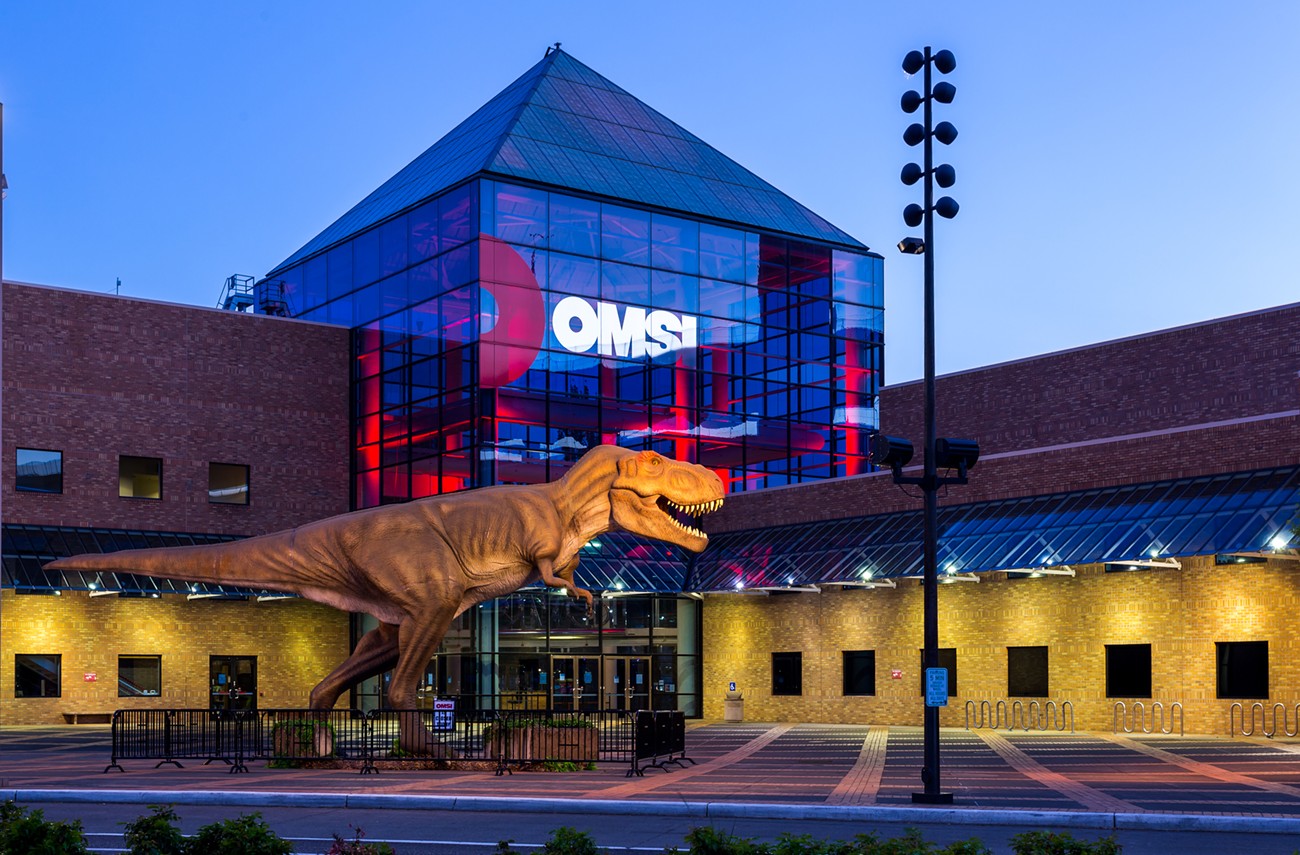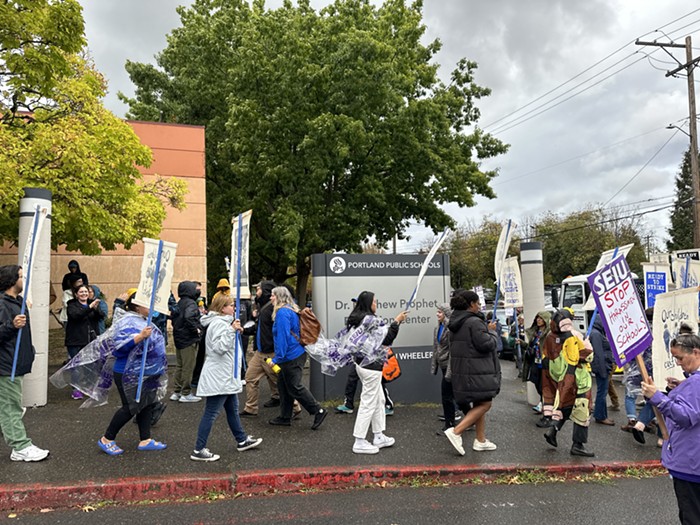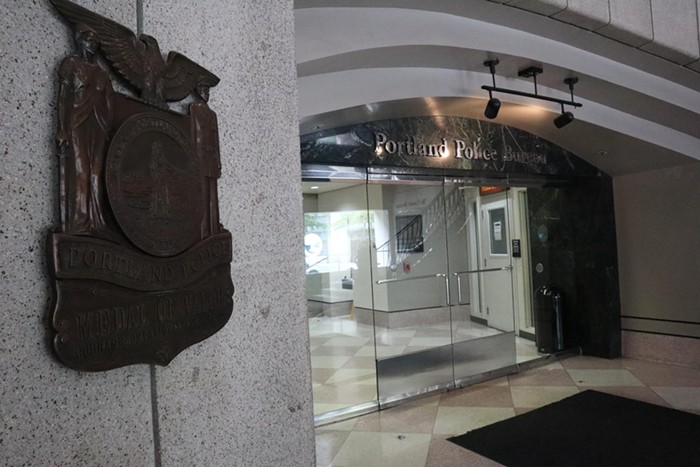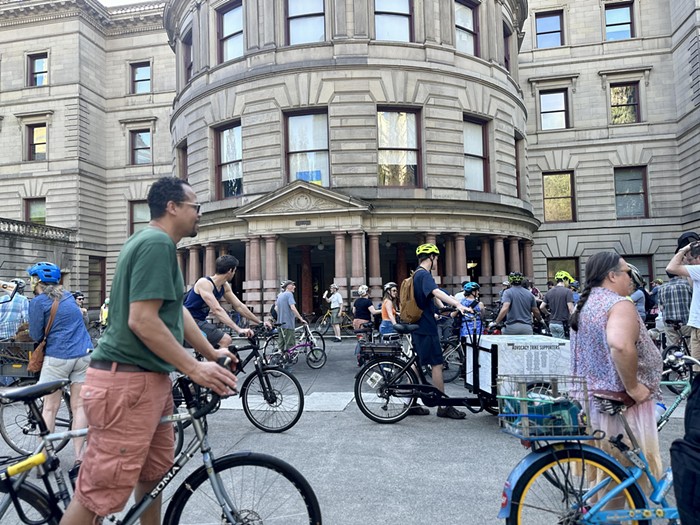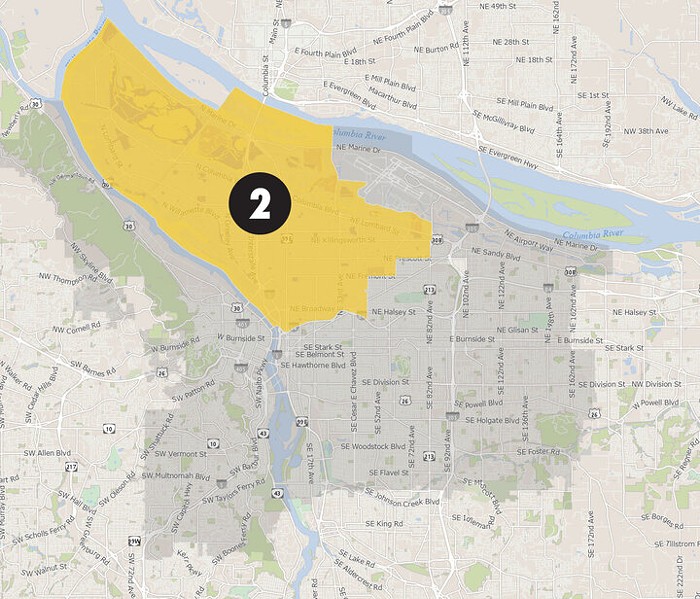On a Monday in mid-March, a group of operational employees at the Oregon Museum of Science and Industry (OMSI) sent an email to the museum’s senior leaders asking for a pay raise.
“Presently, the floor staff at OMSI are struggling to meet living expenses in Portland,” the email read. “Our dedication to the museum does not help us pay for rent, groceries, and other basic needs. A living wage is a necessity for the organization to remain successful.”
The workers asked that the museum raise their hourly wages to at least $21.85 per hour — the living wage in Multnomah County as calculated by the Massachusetts Institute of Technology's (MIT) Living Wage calculator. An attached letter was signed by more than 30 employees, including custodians, educators, and guest services workers, and signed in solidarity by 15 more employees. The museum’s minimum wage is currently $16.80 per hour.
The workers asked for a response to their email by the end of the week. When that response came, it wasn’t what they wanted to hear.
In an email to all museum staff, OMSI President and CEO Erin Graham noted that the museum has increased wages for operations workers by roughly 20 percent since 2021 and is offering a 3.5 percent wage increase for the coming fiscal year. She did not commit to providing a higher wage to all employees and said conversations about the budget would continue moving forward.
“As we’ve discussed, achieving consistent growth over time is crucial for us to continue to invest in compensation,” Graham wrote in a subsequent message to staff. “We are fully committed to our Compensation Philosophy and structure, and we do not plan to deviate from it. Our focus is on enhancing the competitiveness of our pay over time, which can only be achieved through sustained growth in our net revenues.”
In the weeks since, the OMSI workers who organized for the wage increase have been left weighing their options and futures at a museum that some believe has strayed from its core mission of education to one that is more focused on corporate expansion.
“It’s been known for a long time that OMSI chronically underpays its staff,” one operations staff member, who declined to be named out of fear of retaliation, told the Mercury. “That’s always been known. And it’s also caused a brain drain over time, because people want to have a career but they can’t have a career if they continue to work at OMSI.”
The fight for a living wage at OMSI dates back before the onset of the COVID-19 pandemic that shut the museum down for much of 2020.
In 2019, after workers agitated for higher pay, the museum agreed to do a compensation study to review its compensation structures vis-a-vis the broader market at all levels of the organization. The pandemic delayed the completion of that study, but after it was released last year, some employees received raises.
The people at the bottom of the wage scale, however, largely did not. According to sources, the majority of people who work in facilities, education, and guest services at OMSI don’t make a living wage.
A number of those workers have not taken kindly to the proposal to raise wages by 3.5 percent across the board in the coming fiscal year, both because that raise fails to address the living wage issue and because it’s less than the rate of inflation over the last year.
For now, workers and museum leaders appear to be at a standstill. Museum leadership has met with individual teams on the operations side, but some workers see those meetings as a stall tactic.
There were rumors that some operations workers were considering staging a walk-out over the week of Portland Public Schools’ spring break, one of the museum’s busiest weeks of the year, but that didn’t come to fruition.
One thing the workers are not yet doing is attempting to unionize. Sources who spoke to the Mercury said that while workers have talked about the possibility of unionizing, the high level of staff turnover and wide variety of job titles and departments at the museum that would have to be sorted through to figure out potential membership have been daunting to organizers.
Still, organizers feel the possibility of a unionization drive is on the table. According to one employee, two thirds of the full-time floor staff has been involved in organizing efforts dating back to the pandemic and is supportive of the current effort to win wage increases.
“If we were to push for a union, I think it would go through,” one employee said. “I think there’s widespread support for it.”
In a statement provided to the Mercury, OMSI declined to address whether it would voluntarily recognize a union but said that it is “deeply committed to both our people and our mission” and has “a demonstrated track record of investing in our wages and benefits.”
For now, workers argue that the museum’s failure to properly invest in its operations employees has left the operations staff overworked.
“Every single person you look at when you walk into the museum, every single guest services person that is working at the front desk, every single educator you see on the floor, they’re all underpaid and they’re being overworked because the museum doesn't want to raise the wage enough to attract good employees,” the employee said.
Another employee who declined to be named blamed the low wages for a high level of operational staff turnover that they say is a chronic issue.
“There’s all kinds of operational chaos,” that employee said. “We lose people all the time. People come in to replace them and there's never really a good enough transition of skill-sets and knowledge between people, so the overall quality of the work that's being done continues to degrade.”
The battle over OMSI’s resources and budgeting comes as the museum is planning to develop a 24-acre district on the east bank of the Willamette River that is set to include a new educational park and a range of residential and commercial buildings.
The new district is expected to cost $120 million to finance, with OMSI footing a share of the cost alongside private developers and public entities. That project looms in the background of the struggle over wages, with one employee arguing that the museum has become a de facto “corporation” under Graham’s leadership.
That employee said the gap between OMSI’s purported commitment to pay equity and failure to pay all staff members a living wage is just one aspect of a broader issue.
“We have posters of Native Americans on the wall right now, but during the 2020 George Floyd protests, OMSI did not participate at all,” the employee said. “Didn’t do anything. So if there is a notion of doing good for the community, or participating in progressive moments, it’s extremely thin at OMSI. I don’t trust that the intent is there.”
